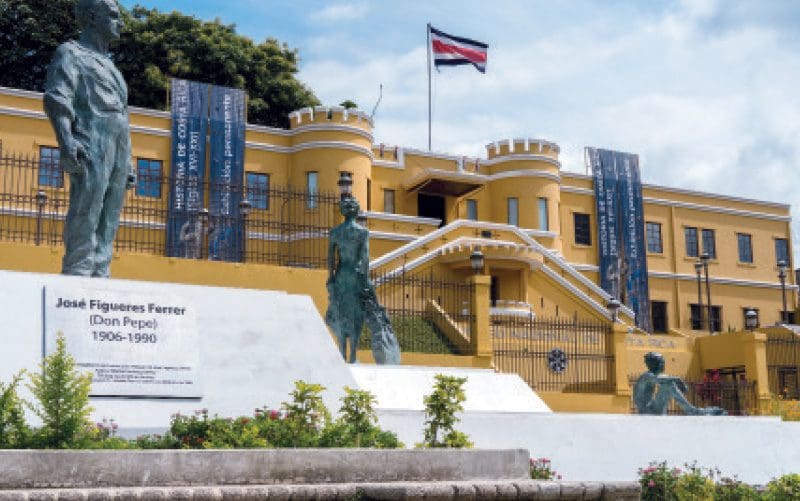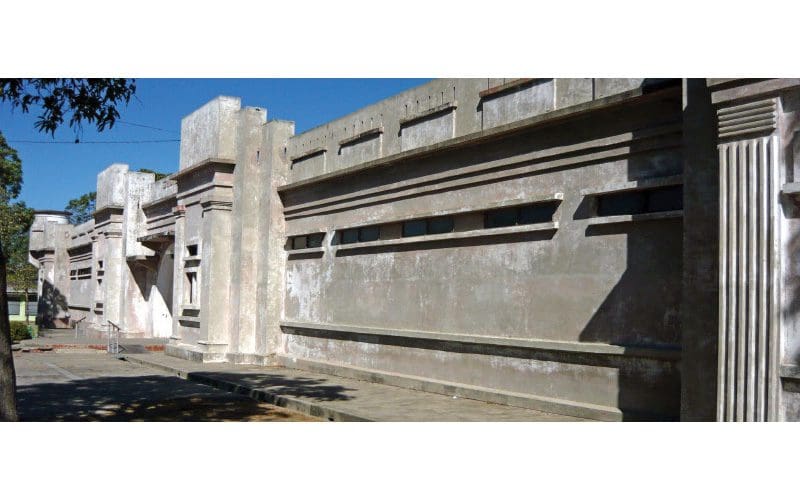
Military Makeovers Honor Culture of Peace
Blessed the Costa Rican mother who knows, when giving birth, that her son will never be a soldier.” That’s what Ryoichi Sasakawa, a Japanese politician and philanthropist, had to say about Costa Rica’s culture of peace during one of his visits here.
There is no question that the abolition of the Costa Rican army on December 1, 1948 is one of the country’s most monumental historical events. The decision by then-president José Figueres Ferrer to end the army as a permanent institution became a lasting legacy for future generations to share and appreciate in tangibly symbolic ways. A culturally defining byproduct may be seen today in the architecture of landmark public buildings in different parts of the country. Examples include several museums housed in repurposed military edifices replete with wartime reminders.
The Museum of Guanacaste is a
proud symbol of national peace.
Notably, the Guanacaste Museum in Liberia is typical of Costa Rican military architecture of its era. Construction of the former Liberia Barracks building spanned the administrations of Ricardo Jiménez Oreamuno (1932-1936) and León Cortés Castro (1936-1940), respectively. Located in the heart of Liberia, it covers an entire block with an area of more than 4,430 square meters. The wall-framed structure of reinforced concrete was designed by architect José María Barrantes and its construction was directed by engineer Max Effinger. The materials were brought by train to Puntarenas and then transported to Liberia by motor boat through the Tempisque River to Liberia. Its U-shaped corridors led to bedrooms for the troops and commander, bathrooms, a weapons store, offices, library, warehouse, public jail and central courtyard. The main facade faces south, where some ornamental art deco elements remain appreciated by modern visitors.
The building previously was occupied by ministry of public security and justice officials, respectively, and also served as Liberia’s prison for many years. Today, as a cultural center for showcasing the province’s artistic contributions as well as its rich history, the Museum of Guanacaste is a proud symbol of national peace. For Liberia in particular and Guanacaste in general, the old barracks is considered an urban landmark for reasons of architectural beauty and historical importance. It was declared an architectural heritage site on December 17, 1998.

Other Cultural Conversions
For Costa Rica, the transformation of historical military buildings into modern cultural attractions reflects a society that values public investments on health, education and housing over armed forces reinforcement. The Liberia Barracks’ conversion to the Guanacaste Museum is just one example. Also notable are the following iconic museums, featured in the December 2018 and January 2019 issues of Howler, respectively.
The Juan Santamaría Historical Cultural Museum in Alajuela is housed in that community’s old army barracks and prison buildings dating back to the 1870s. History buffs can explore endless facets of Costa Rica’s military, cultural and artistic heritage through ever-changing exhibits and events at this fascinating attraction, an initiative of the Ministry of Culture and Youth.
The National Museum in San José resides in the former Bellavista Fortress, a military barracks built in 1917 that figured prominently in Costa Rica’s civil war until the army’s abolishment in 1948. Its walls remain peppered with bullet holes, reminding modern visitors of this cultural and scientific learning center’s wartime underpinnings.
Otto Apuy – Multimedia Artist
Envision Festival Spotlights International Artists
Max Gea – Musician
Juan Carlos Camacho – Blending of Art and Architecture
Joe Hrbek – Gold Coast’s Iron Sax Man
Stephanie Waltrip – Musician
David Villalobos – Young and the Restless
Rebeca Alvarado Soto: The art of the dance
Fiery Flamenco Guitar
Leatherback Rock
Marvin Dolgay – Musician
